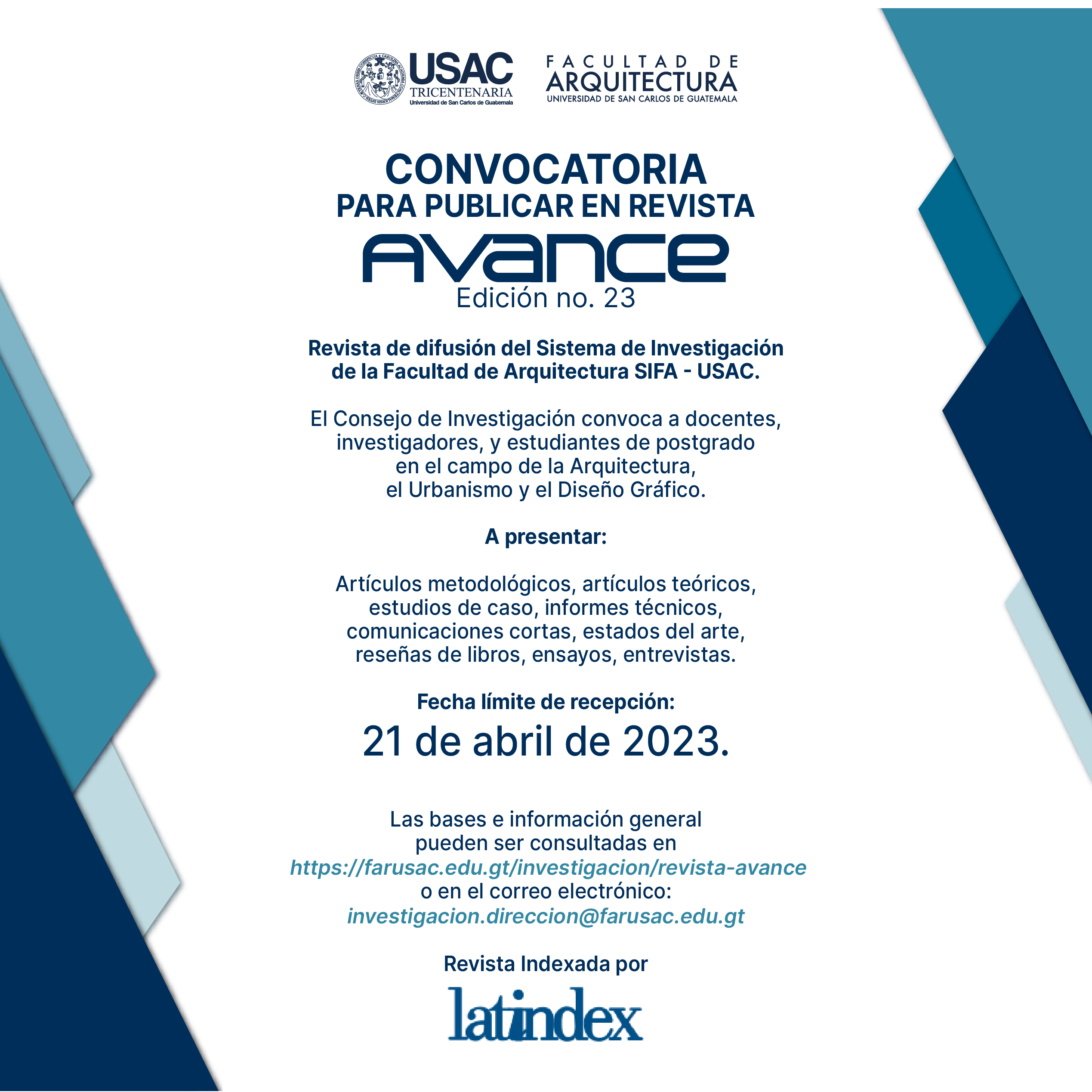Monumental Urban Spaces. 18th Century, From Antigua To Nueva Guatemala.
Keywords:
urban perspective, mall, plaza atrium, porticoed square, temple, bell towers, cupolas on drumAbstract
The conference addresses the common and contrasting urban aspects between the
abandoned capital of Antigua and its successor, New Guatemala, as the capital of
colonial Spanish Central America; the latter prevails in part in the current Historical
Center of the Guatemalan capital. Urbanistic aspects such as the persistence of the checkerboard layout but which will be expanded and hierarchized in the new capital, the allusions to the model of the royal square that will end up configuring the new Plaza mayor, the oblique perspective and monumental frontispieces that will strengthen the presence of the temples, the relay in the center of the Plaza Mayor of the fountain of copones by a temple with a royal statue, among others. The common urban aspects
are explained by the Spanish-colonial city model itself and to a lesser extent by
traditions from the previous capital, but which coexisted with various urban innovations introduced by Spanish architects for the new capital. Whose sense responds to strengthening the religious aura in the city, the symbolization of monarchical power and the status of capital city, the plastic-artistic prominence of monumental architecture in the urban landscape, all of which came together in a peculiar and impressive aesthetic experience.
Downloads

Downloads
Published
How to Cite
Issue
Section
License
Copyright (c) 2020 Carlos Ayala R.

This work is licensed under a Creative Commons Attribution-NonCommercial-ShareAlike 4.0 International License.












